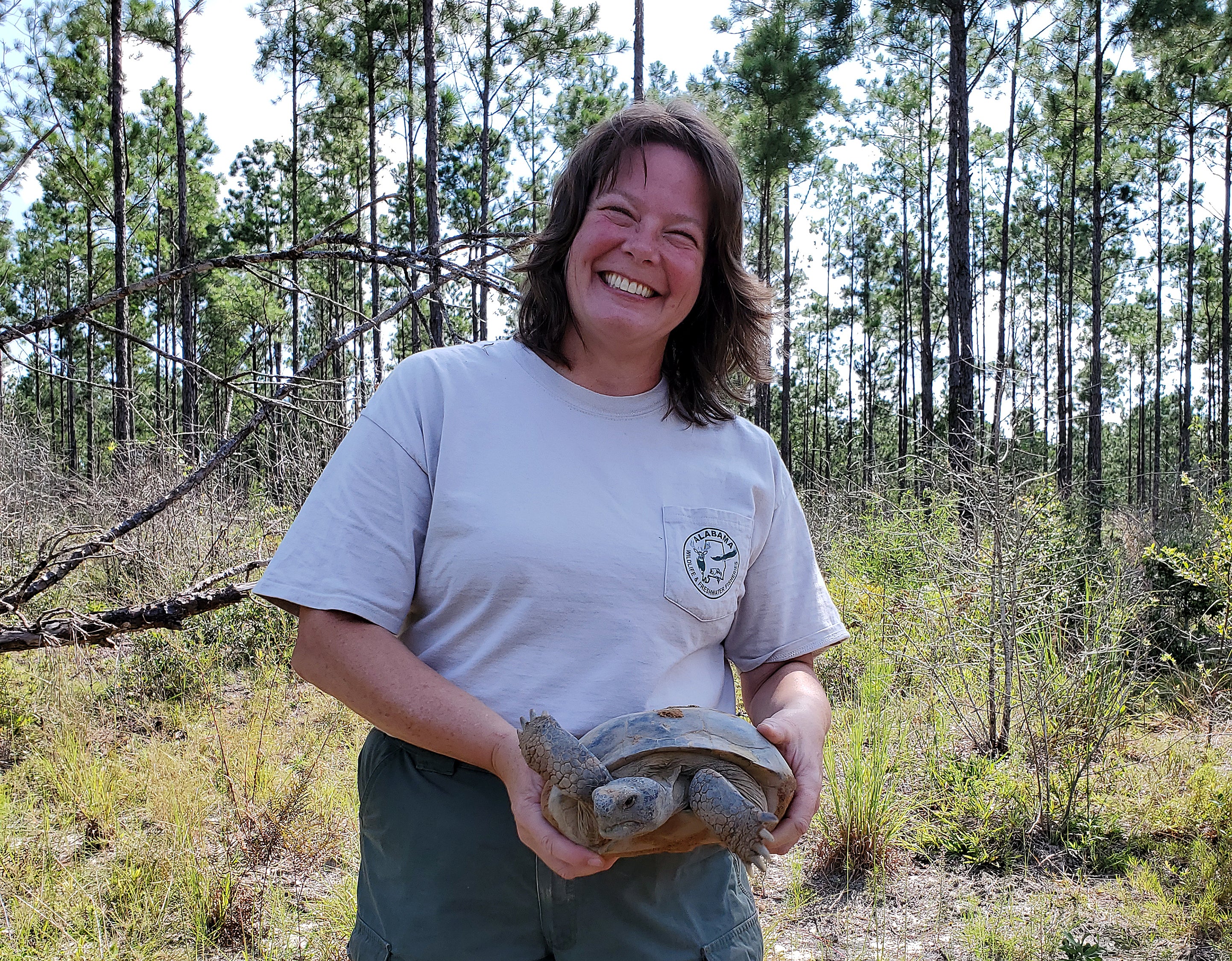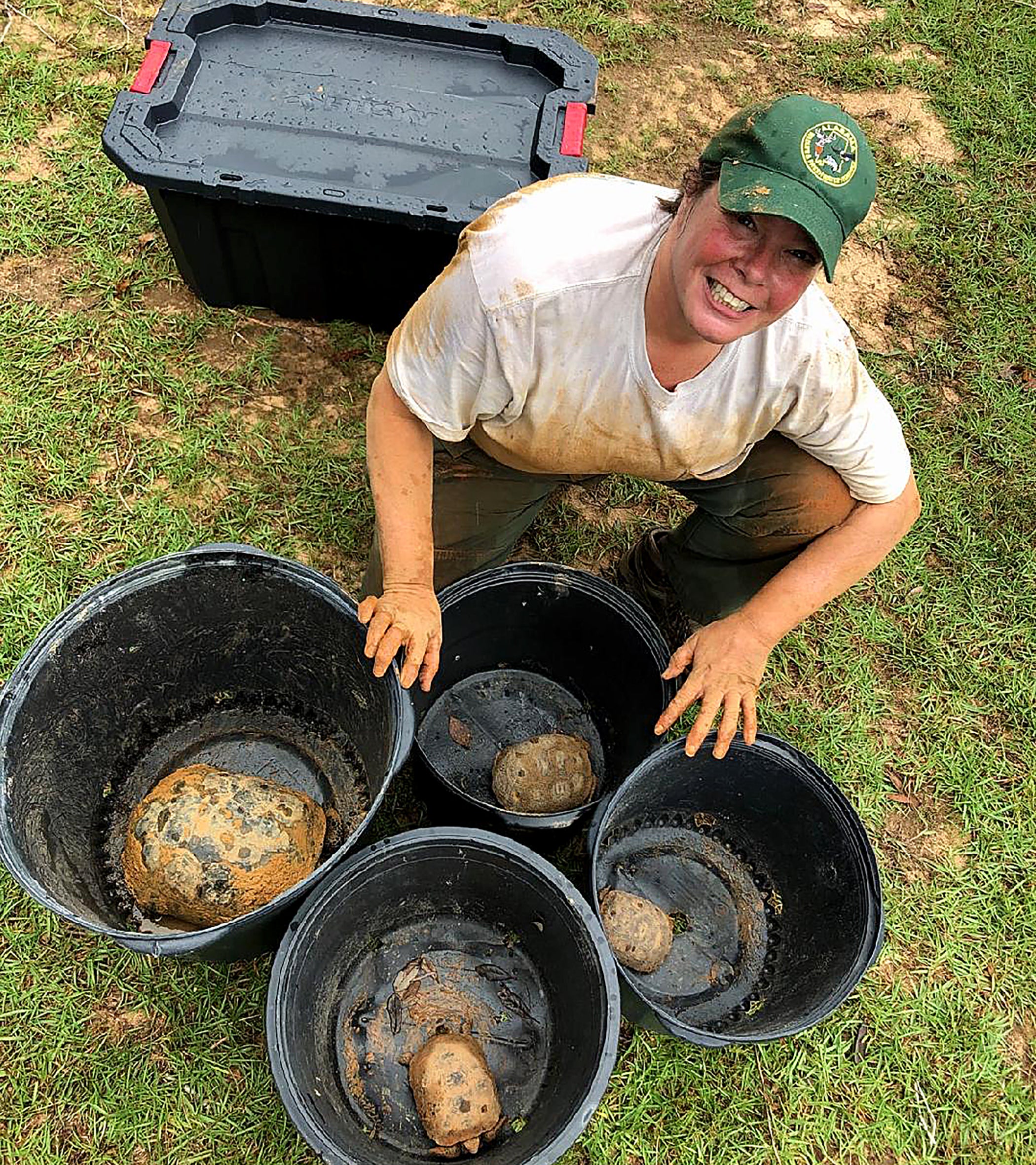By DAVID RAINER, Alabama Department of Conservation and Natural Resources
The contribution Ericha Shelton-Nix continues to make to Alabama’s nongame wildlife populations has been recognized for the second year in a row by the U.S. Fish and Wildlife Service (USFWS).
Nix, a biologist with the Alabama Department of Conservation and Natural Resources’ (ADCNR) Wildlife and Freshwater Fisheries (WFF) Division, was among the recipients in the Southeast Region to receive the 2021-2022 Regional Director’s Honor Award for Private Landowners (Group). The award announcement reads: “Southeast Forest Landowner Conservation partner awards acknowledge your significant contribution and willingness to work with the Service toward the conservation of natural resources in the Southeast.”
Nix received the same recognition for 2020-2021 for her work with Alabama’s unique Red Hills Salamander and its habitat in Monroe County. She was part of the team that helped with the land acquisition that became the Red Hills Wildlife Management Area.
This year’s award was for her work with gopher tortoise research and conservation in southeast Alabama, which included starting the Alabama Tortoise Alliance (ALTA), a partnership with private landowners, state and federal agencies, local governments, organizations and businesses to manage and conserve gopher tortoise populations and habitat. Other members of the ALTA group were recognized by USFWS, including Ray Metzler with the Alabama Forestry Commission.
“I started the Alabama Tortoise Alliance, and we met every six months,” Nix said. “We had 30 to 50 people coming together from across the state to collaborate for gopher tortoise conservation. The initiative was that everybody was doing something, but nobody knew what the other person was doing for gopher tortoises. So, the whole point was to collaborate and compile information that was considered as good science and then submit that information to the U.S. Fish and Wildlife Service, so it could be used in the listings decisions.”
Chuck Sykes, WFF Director, applauded the recognition Nix received from the USFWS.
“Ericha is a leader in gopher tortoise advocacy for our agency,” Sykes said. “Her work with our federal partners, nongovernmental organizations, private landowners as well as industry sets a shining example of how collaboration moves the needle in wildlife and ecosystem conservation.”
The gopher tortoise is considered a keystone species, impacting about 365 species of amphibians, reptiles, birds, mammals and invertebrates in the sandy-soil habitat across their southeastern range. In August 2022, juvenile gopher tortoises were released in Geneva State Forest Wildlife Management Area (WMA) in Covington County to facilitate research on the animals’ range and movement patterns. Transmitters were attached to numerous tortoises, and the telemetry work to track those animals started on June 1. Jeff Goessling, an assistant professor at Eckerd College in St. Petersburg, Florida, and his students will conduct the telemetry research.
“We’re ready to see where those tortoises dispersed,” Nix said. “We have 90 tortoises with transmitters, both head-starts (hatchling tortoises reared in captivity to maximize growth rates) and adults. The larger pen has been removed, and we want to see if the animals are staying there or if they’re dispersing farther out. We consolidated those tortoises in the 40-acre pen to create a population that would be on a trajectory to become viable in the future, that would have sufficient density to propagate.
“We fenced that area in Geneva WMA to hopefully create site fidelity. Otherwise, they just want to return to where they came from. Now that we have taken down the fence, we’re going to see if they are going to stay put or if they’re going to move.”







